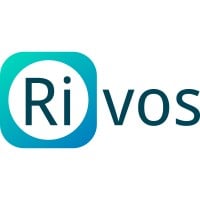
Rivos
Jobs at Similar Companies
Similar Companies Hiring
Jobs at Rivos

Let Your Resume Do The Work
Upload your resume to be matched with jobs you're a great fit for.
Success! We'll use this to further personalize your experience.
Recently posted jobs
Software
Lead the design of analog circuits for advanced systems, ensuring development and verification of silicon IPs, while collaborating closely with various engineering teams.
Software
As a Deep Learning Libraries engineer, you will develop and optimize Deep Learning operators, collaborate with teams, and influence HW architecture for performance improvement.
Software
As a System Hardware Engineer, you will design schematics, develop system designs, conduct lab bring-up and testing, and collaborate on power and signal integrity analysis.
Software
The Senior Field Application Engineer provides technical support for integrating GPU and CPU solutions, collaborating with customers, conducting presentations, and solving application issues.
Software
The eFA Engineer conducts fault isolation and failure analysis of SoCs, designs experiments, and drives corrective actions to improve product quality.
Software
Lead the productization of semiconductor chips, develop test plans, analyze data, and improve designs through collaboration with cross-functional teams.
Software
Develop and debug emulation models for SOC projects, collaborate across teams, and improve emulation methodology. Requires knowledge in digital logic and SOC architecture.
Software
The LEC Engineer will improve logical equivalence checks, automate verification flows, and collaborate with design teams and vendors for tool enhancements.
Software
As a Logic Equivalence Check Engineer, you will build formal verification flows, improve debugging processes, and integrate solutions with cross-functional teams.
Software
The role focuses on performance analysis, modeling, and validation for deep learning systems, enhancing both hardware and software responsiveness.
Software
Develop cutting-edge test generation strategies for validating accelerator designs, collaborating with hardware and software teams to create a variety of tests.
Software
Design and deliver custom SRAM and register file memories, optimize performance and power, and collaborate across teams to enhance circuit designs.
Software
The ESD Engineer develops and implements ESD control procedures, tests products for ESD susceptibility, and conducts ESD simulations while investigating incidents.
Software
The FPGA Design Engineer will design, implement and verify FPGA systems, conduct lab testing, and potentially expand into firmware development.
Software
Develop custom SRAM and register file memories, improve circuit performance, optimize power, and support silicon bring up. Requires extensive experience in circuit design and collaboration with various teams.
Software
Develop custom SRAM and register file memories to enhance circuit performance. Collaborate across disciplines for design implementation and optimization.
Software
Develop custom SRAM and register file memories, improve circuit performance, and support silicon bring-up, requiring extensive circuit design experience.
Software
The DFT Engineer will design and validate DFT features, create test plans, and collaborate with teams to meet requirements. Responsibilities include debugging and ensuring compliance with DFT methodologies.
Software
Design and develop SRAM and register file memories, ensuring performance and low power usage while collaborating on custom circuit design and implementation.
Software
Analyze power dissipation in server workloads, collaborate with teams to optimize power/performance ratio, and automate measurement infrastructure.






